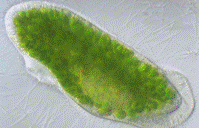Biological Sciences, School of

School of Biological Sciences: Faculty Publications
Document Type
Article
Date of this Version
3-1995
Citation
International Journal of Plant Science (1995) 156(2): 172-180.
Abstract
The organogenesis of inflorescences, flowers, and fruits was followed for two years in a male and a female tree of eastern cottonwood, Populus deltoides. Soon after anthesis, an inflorescence for the next year is initiated as a continuation of the apical meristem in most axillary buds of the extension shoot of the current year. Bract and then floral primordia arise helically, and by the end of summer all floral appendages are evident. Individual perianth parts are evident early in ontogeny but not at anthesis; they are vascularized independently by distal traces of discrete vascular strands that also serve the androecium or gynoecium. The stamens arise and are vascularized in centrifugal order, the first- and last-formed stamens receiving their traces from the proximal and subdistal divisions, respectively, of the discrete vascular strands serving groups of stamens. There is no external evidence of stamen fascicles. Centrifugal polyandry is interpreted as a derived state in Populus. The usual number of carpels in P. deltoides is three, but two and four are not rare, and two is probably the plesiomorphic state for the genus.


Comments
Copyright 1995, University of Chicago. Used by permission.